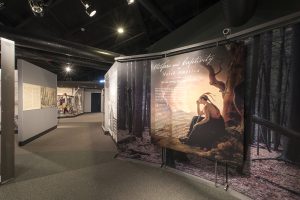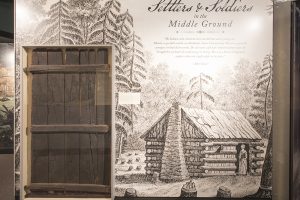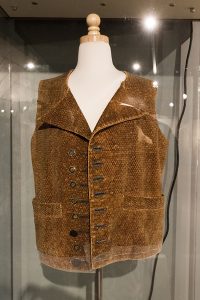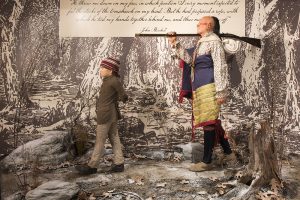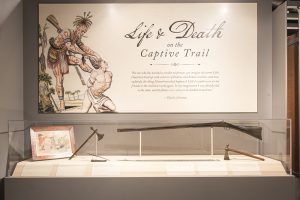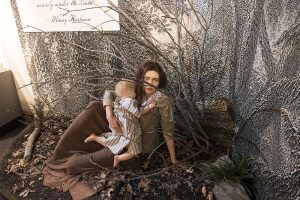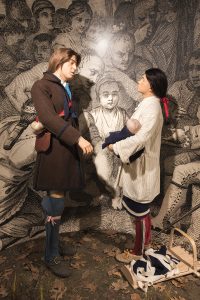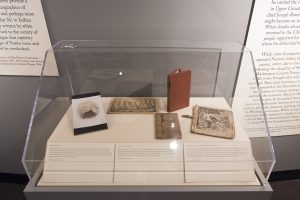Captured by Indians
MAY 22, 2015 – OCT. 2, 2016 The Captured by Indians exhibit examined the practice of captivity from its prehistoric roots to its impact on modern American Indians and other ethnicities.
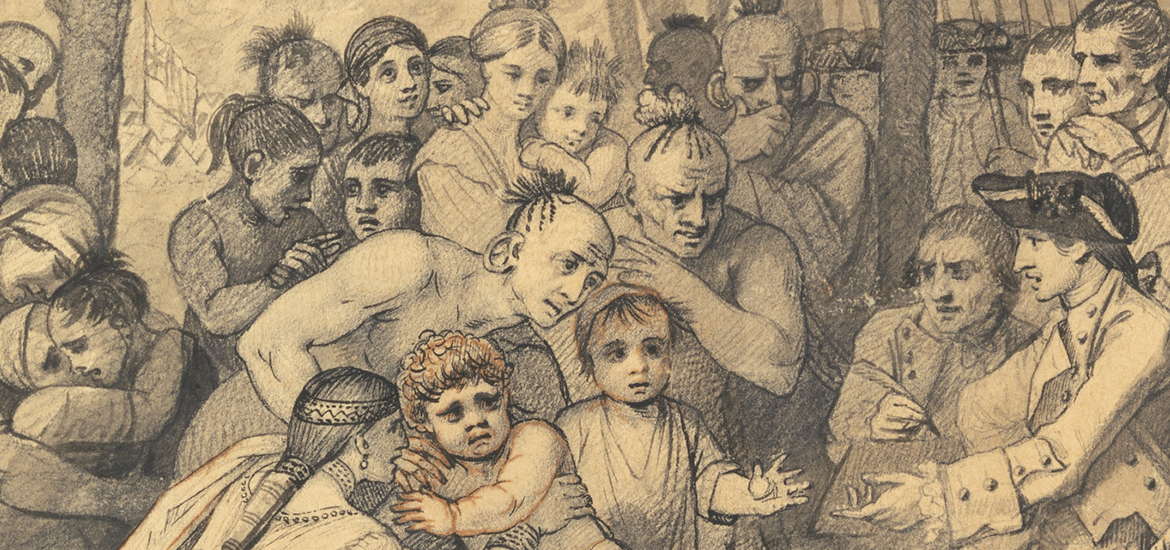
WARFARE & ASSIMILATION ON THE 18TH CENTURY FRONTIER
During the turbulent decades of the mid-18th century, thousands of European and African settlers were captured by American Indians whose dwindling numbers forced them to adopt non-Indians in an effort to survive. The subsequent experience of captivity and adoption forever altered both the captives and their captors as identities shifted, allegiances were tested, and once-rigid lines between cultures became forever blurred.
Using documentary evidence gleaned from 18th and early 19th century primary sources, dozens of rare artifacts, and a wide array of imagery, the Captured by Indians exhibit examined the practice of captivity from its prehistoric roots to its impact on modern American Indians and other ethnicities.
Highlights of the 3,000-square-foot exhibit included:
- Three new life-like vignettes, including John Brickell, a local boy captured just a few miles from Fort Pitt at age 10; Massy Harbison, who heroically saved the life of her child after escaping from her captors; and the Kincade family, who were reunited on the Bouquet Expedition in 1764;
- A bullet-ridden 18th century door from a cabin near Ligonier, Pa., that was attacked by Indians during the American Revolution;
- The Logan war club which was left at the site of a brutal Indian raid in southwest Virginia in 1774;
- A rare prisoner cord, used to bind captives taken during raids on frontier settlements;
- An American Indian horn spoon given to Catharine Bard by her Delaware captors in 1758;
- An original pencil sketch of Mary Jemison, who was captured during the French & Indian War and lived out the rest of her days among her adoptive people; and
- The waistcoat of Jacob Miller, a frontier settler who was killed during a raid on Miller’s Blockhouse in Washington County in 1782.
Told through the experiences of real-life captives, this compelling look at the 18th century frontier left visitors of all ages with a new understanding of the complexity of our past and the diversity of our present.
Captivity Narratives
The following are excerpts from various captivity narratives that have informed the Captured by Indians exhibit.
- Massy Harbison
- Richard Bard
- Nimrod Ashby
- William Barnett
- Mary Jemison
- Jonathan Alder
- James Bell
- Adam
On the Blog
- Making Massy Harbison
- The Life and Myth of Simon Girty
- Portrait of a Frontiersman: James Smith
- Mrs. Bard’s Spoon
- Bound by Tradition: Prisoner Restraints in the Captive Experience
Exhibit Sponsors
David and Wendy Barensfeld
The Laurel Foundation
Richard King Mellon Foundation
H. Woodruff Turner
For more information, please contact Fort Pitt Museum Director, Alan Gutchess, or Exhibit Specialist, Mike Burke, at 412-281-9284.
Exhibit Gallery
